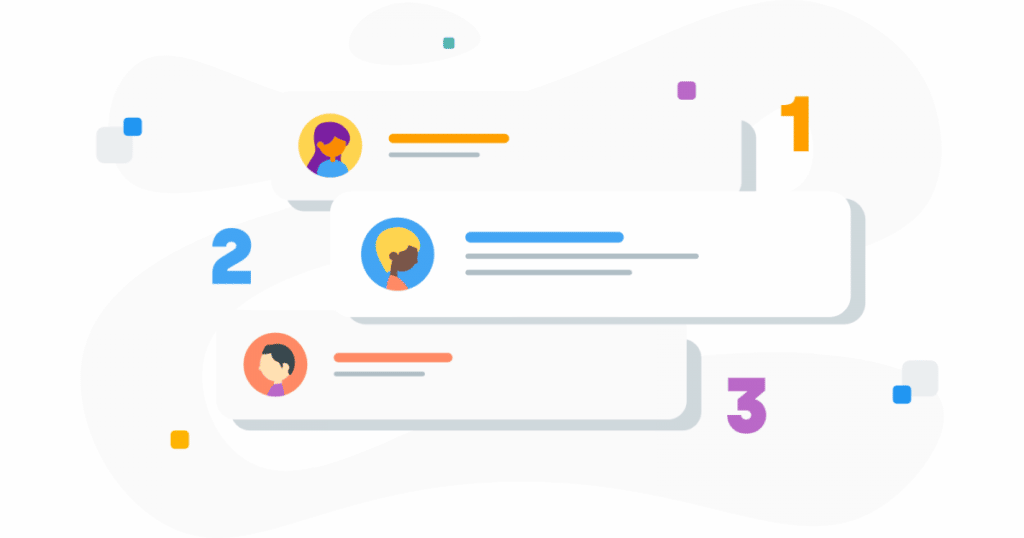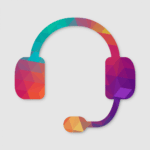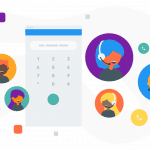What is Call Queue and How to Use it for Inbound Calls

Having to wait on hold is one of the main reasons why customers dislike calling support lines. For the majority of us, doing that means we can expect either a long time waiting on hold or having to call multiple times just to get through. It’s even worse, considering that, unlike a checkout or takeaway queue, there’s often no way of knowing how many callers are in line before you (unless stated) or how many agents are currently working.
Wouldn’t it be much more helpful if callers could find out straight away how much time it should take for them to reach an agent? And in case the waiting time is long, to leave the call without losing their place in the queue? It would – and that’s exactly why call queue features were invented. Sounds useful? So let’s talk a bit today about what a call queue system is and how it can be of help to both your customers’ and agents.
O que é uma fila de chamadas?
Quando há mais chamadores do que você pode atender em um determinado momento, eles ficam automaticamente alinhados esperando para que você possa atendê-los na ordem em que ligaram – quase de forma idêntica a uma fila física típica.
The difference is that when standing in a physical line, customers can see how many people are ahead of them, and how many employees are working and can estimate the time they will have to keep waiting until their turn. In virtual queues, clients can’t see the other callers or staff – there might be only 1 person waiting, or there may be 20, and the same goes for agents.
Portanto, o tempo de espera pode ser de apenas um minuto ou dois, mas também pode ser de uma hora. Nessa situação, do ponto de vista de quem ligou, ele tem apenas duas opções: esperar até que alguém atenda a chamada ou desligar e tentar novamente mais tarde.
Both options come with a risk, though. Waiting on hold might take several minutes waiting for an agent to answer, but hanging up the call means losing their current place and having to phone back another time. And since callers don’t usually have enough information to find out which option would be the fastest, they mostly rely on making guesses. With a call queue attendant’s help, though, there’s no need for guesswork – they can give callers exactly the necessary information at that moment.
Discover 12 more amazing features for Call Centers!
O que é um sistema de fila de chamadas?
A principal função de um sistema de fila de chamadas é encaminhar todas as chamadas recebidas para o atendente mais adequado para a pergunta de quem ligou. Isso minimiza o risco de ter que transferir chamadas (e todos sabemos o quanto os clientes odeiam ter que repetir suas perguntas para vários atendentes) e também ajuda quem ligou a resolver seus problemas mais rapidamente.
But that’s not all a call queuing system can do. It can also help assist callers during the time they stay on hold. Through pre-recorded messages, an attendant can greet callers and inform them how many people are waiting in the queue or what the current hold time is.
In the case that the hold time is especially long, the attendant can also ask a caller whether they wish to continue waiting in line or if they would prefer to leave their contact number for an agent to contact them later.
Durante o tempo em que quem ligou permanece na linha, você também pode usar mensagens pré-gravadas para fornecer uma oferta personalizada ou solicitar que a pessoa prepare qualquer informação que seja necessária para o caso (como número do pedido ou ID do cliente). Para que mais você pode usar um sistema de fila de chamadas?
- Business hours rules: here, you can specify how calls should be handled when your contact center is open, but also how they should be dealt with during holidays, weekends, and out-of-hours.
- Greetings and music: to make your callers’ on-hold times a bit more pleasant, you can upload recorded greetings, personalized messages, or music files that will be played while waiting for agents.
- Call distribution and routing rules: with this, you can decide what method should be used for routing calls – to the least busy agent, someone with matching skills, or all to one agent in a certain group.
- Callback: if the on-hold waiting time is too long or the calling queue is currently full, you can suggest that your customers leave the line but still keep their place in the queue. When an agent becomes available to take the call, they can be immediately connected to the caller through the call queue system.
Como você pode usar uma fila de chamadas no seu contact center?
Long calling queues to your company’s number can be a good sign. It means that your business is growing and attracting new customers, thus, having people wait in line is sometimes unavoidable. The problems start when callers have to wait too long and abandon calls out of frustration.
It would be ideal if your agents could answer every single call as soon as it comes in without ever needing to put callers on hold. That’s not realistic, though – during peak hours or a busy holiday season, answering all calls straight away is often an impossible task.
A reliable contact center with a call queue feature can, however, help your agents quite a bit with managing call queues and keeping callers waiting patiently until there’s an agent ready to take the call. What else can a call queue feature help your business with?
1 – Reduz os tempos de espera
Além de direcionar quem ligou para o primeiro atendente disponível ou mais qualificado, um sistema de fila de chamadas tem alguns outros recursos que podem reduzir notavelmente os tempos de espera. Por exemplo, com Grupos de Toque, você pode configurar o sistema para que todos os atendentes pertencentes a um determinado grupo sejam informados sobre uma chamada recebida e o primeiro atendente a responder seja conectado a quem ligou.
2 – Melhora a satisfação do cliente
One of the best things you can show to your callers is that you value their time. With properly set up call queue workflows, callers won’t have to wait on hold without knowing how long it will take them or explain their issues to several agents. A Call Queue attendant can tell callers straight away if there will be an agent available soon to take their call or if the queue is already full. If a caller doesn’t want to or can’t wait on hold, they can also simply ask for a support agent to call them back when one becomes available. By routing to the right agent straight away, you also increase the chances of a customer’s issue being fixed on the first call, greatly improving their satisfaction with your service.
3 – Melhora a produtividade do atendente
Além de deixar quem ligou mais feliz, o recurso de fila de chamadas também pode beneficiar seus atendentes. Em primeiro lugar, as chamadas serão distribuídas uniformemente entre os grupos de atendentes, o que alivia um pouco a pressão. O roteamento de chamadas também garante que os atendentes recebam perguntas e problemas relacionados às suas habilidades ou cargos específicos, minimizando o risco de ter que transferir chamadas para outros atendentes (e frustrar quem ligou). E como eles terão todas as informações de quem ligou diretamente em seu dashboard, os atendentes podem preparar tudo o que precisam antes de serem conectados a quem ligou em vez de perder um tempo precioso durante a chamada.
4 – Diminui a taxa de abandono de chamadas
Quando quem ligou sabe que não terá que perder tempo em espera, é muito mais provável que entre em contato com você com quaisquer problemas ou dúvidas que possa ter. Retornos de chamadas e músicas ou mensagens personalizadas também podem ser de grande ajuda para manter quem ligou paciente até que um atendente possa contatá-lo.
Conclusão
Waiting on hold can be a truly nerve-wracking experience for callers – especially if they don’t know how long they might be kept waiting. With call queuing, though, getting in touch with phone support doesn’t have to be such a miserable experience – quite the opposite, in fact.
À medida que os clientes estão ligando para o número de suporte, eles podem obter todas as informações de que precisam para tomar uma decisão sobre se desejam permanecer em espera ou receber uma chamada de retorno. E qualquer que seja a opção escolhida, quem ligou sabe que será conectado a um atendente com exatamente o conhecimento e as habilidades necessárias para resolver o problema. Isso também funciona a favor dos seus atendentes, pois eles podem relaxar um pouco sabendo que o sistema de fila de chamadas vai ajudá-los.
Tudo o que é necessário agora para você é escolher um sistema telefônico de qualidade baseado em nuvem que se tornará parte da sua equipe – como o CloudTalk, que pode oferecer muitos recursos de chamada em uma plataforma integrada.























